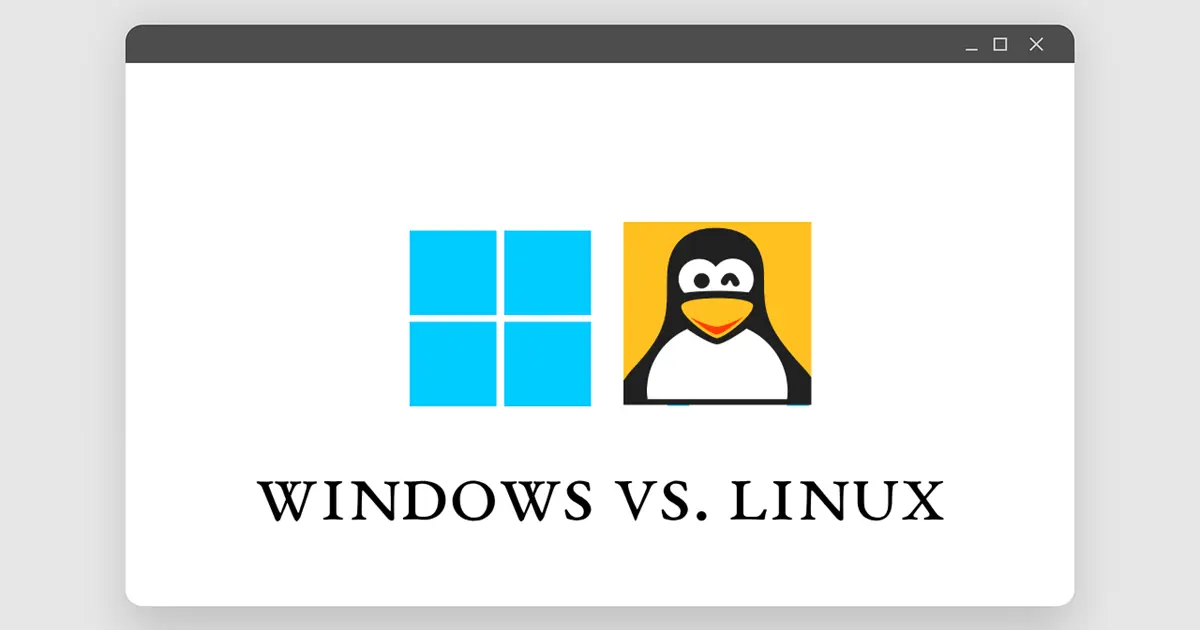Choosing between Linux vs Windows can significantly impact your computing experience. Both are widely used, but they differ in usability, performance, customization, and cost. In this article, we’ll compare Linux and Windows across key areas to help you decide which system best suits your needs.
Table Of Content
Overview of Linux vs Windows
Windows
Windows, developed by Microsoft, is the most widely used system worldwide. It’s known for its user-friendly interface, extensive hardware compatibility, and strong support for commercial software. Because of its global adoption, Windows is often the default choice for personal, business, and gaming use.
Linux
Linux is an open-source, Unix-based system recognized for its flexibility, security, and performance. Available in different distributions (distros) like Ubuntu, Fedora, and Debian, Linux offers a range of options tailored to users from beginners to advanced developers.
(For a deeper dive into how Linux organizes data, check out Understanding the Linux File System Hierarchy.)
User Interface and Ease of Use
Windows
- User Interface: Provides a familiar graphical interface with a start menu, taskbar, and system tray.
- Ease of Use: Designed for a broad audience. Most tasks, from installation to software management, are simplified through point-and-click actions.
Linux
- User Interface: Varies across distros. Options like GNOME, KDE, and Xfce provide diverse looks and functionality.
- Ease of Use: Some distros, like Linux Mint, mimic Windows for an easier transition, while others like Arch Linux focus on minimalism. While the command line is powerful, newcomers may face a learning curve.
Software Availability and Compatibility
Windows
- Software: Offers the largest library of applications, including Microsoft Office, Adobe Creative Suite, and a wide range of games.
- Compatibility: Excellent hardware support with pre-installed or easily available drivers.
Linux
- Software: Provides extensive open-source alternatives such as LibreOffice (office suite), GIMP (image editing), and Blender (3D design). Some commercial apps may not be available, but tools like Wine and virtualization software can help run Windows programs.
- Compatibility: Runs on diverse hardware, though some drivers may need manual setup.
(Check out our blog on Managing Packages in Linux: apt vs. yum vs. snap to see how Linux software is installed.)
Performance and Customization
Windows
- Performance: Resource-intensive, especially on older machines. Regular maintenance such as updates and cleanup is necessary.
- Customization: Allows limited changes, mainly in appearance and settings.
Linux
- Performance: Lightweight and efficient, even on older hardware. Popular for use in servers and development environments.
- Customization: Highly customizable, from the kernel to the desktop environment. This makes Linux ideal for power users and developers.
Security and Privacy
Windows
- Security: A common target for malware due to its popularity. Requires frequent updates and antivirus software.
- Privacy: Windows has faced criticism for data collection practices. Some settings can be adjusted for better privacy, but not all.
Linux
- Security: More secure by design, with fewer malware threats. Regular updates and community oversight strengthen protection.
- Privacy: Linux distros typically do not collect user data, giving users complete control over their systems.
Cost
- Windows: Requires a paid license, and some software carries additional costs.
- Linux: Free and open-source. Most Linux applications are also free, making it cost-effective for both individuals and organizations.
Use Cases: When to Choose Linux vs Windows
- Windows: Ideal for general users, businesses, and gamers who need broad compatibility and ease of use.
- Linux: Best for developers, system administrators, security professionals, and enthusiasts who value performance, flexibility, and privacy.
Conclusion
The choice between Linux vs Windows depends on your goals. Windows is user-friendly and offers unmatched software compatibility, while Linux excels in security, customization, and cost-effectiveness. By weighing the strengths and weaknesses of both, you can select the system that fits your needs.







